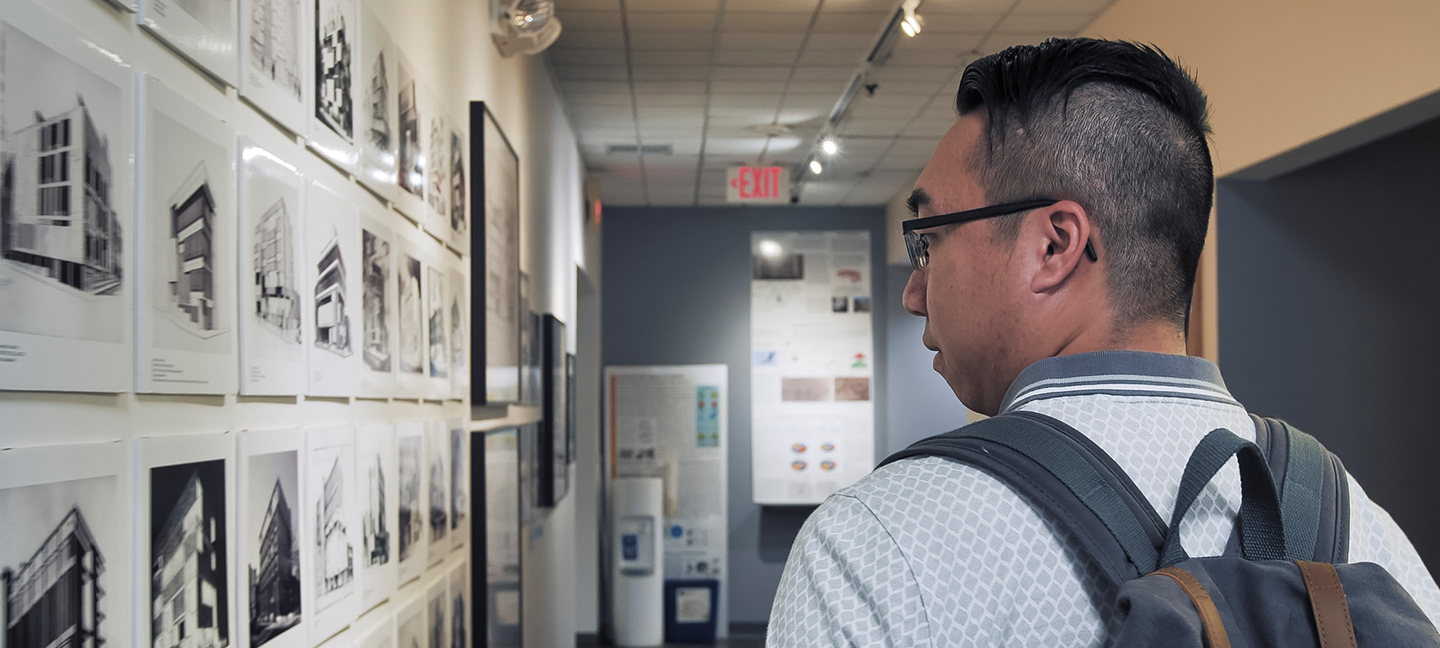
Bachelor of Design Studies Computation Design Curriculum
Bachelor of Design Studies Computation Design Curriculum
As a Computational Design student, you’ll learn to use digital technology in the design process to become proficient in areas such as building information modeling, design visualization and rendering, environmental simulation, and more.
Your curriculum emphasizes innovative problem-solving within an interdisciplinary environment, examining the cultural and creative implications of using computers in the design of the built environment and the generation of spatial forms. You’ll also explore how the computer applications you use can significantly influence and enhance your ability to develop novel digital processes to achieve innovative designs solutions.
Curriculum
Segment I
Semester 1
- FND1006 CityLab
- FND1008 CityX
- FND1003 Foundation Studio 1
- FND1005 Design Representation
- FND1001 Critical Reading and Research 1
- Liberal Studies Elective or History Theory Elective
Semester 2
- FND1004 Foundation Studio 2
- FND2011 Sustainable Material Assemblies
- FND1010 Making and Modeling
- FND1002 Critical Reading and Research 2
- FND2007 Community Practice
- PRV0001 Portfolio Review / Practice Assessment
Segment II
Semester 3
- APL1011 Design Studies Practicum Seminar 1
- DME2000 Spatial Thinking
- DME2001 Observation and Imagination Drawing
- DME2017 Illustration: Information Graphics, Diagramming, and Programming
- SSH1012 Social and Political Theory
- MNS1001 College Algebra and Trigonometry
Semester 4
- Directed Studio Option
- DME2032 Autodesk: Revit 2D and 3D Representation
- DME2042 AutoCAD 1: 2D Drafting
- DME2034 Rhino 1: 3D Design
- HTC1050 History of Architecture and Design
- MNS1002 Physics
Semester 5
- Directed Studio Option
- DME2045 AutoCAD 2: 2D Site Plan Graphics
- DME2055 Algorithmic Design - Grasshopper
- DME Design Media Elective
- MNS Mathematics and Natural Sciences Elective
- SSH1002 History and Modernity: Special Topics
Semester 6
- DME2028 Digital Fabrication and Model Making
- DME2037 Rendering with V-Ray
- DME Design Media Elective
- APL1012 Design Studies Practicum Seminar 2
- HTC History Theory Elective
- SSH1099 Independent Study Seminar
- PRV0002 Portfolio Review 2
Segment III
Semester 7
- DST1101 Design Studies Degree Project 1
- DME2072 Advanced Revit and Computational Workflows
- SSH Social Science and Humanities Elective
- ART Arts Elective
- Open Elective
Semester 8
- DST1102 Design Studies Degree Project 2
- DME Design Media Elective
- Open Elective
- Open Elective
Design Practicum
The BDS Practicum challenges students to critically examine their experience so they understand the knowledge they have acquired from that experience.
In Practicum Seminar 1, students evaluate the four types of knowledge we acquire - factual, conceptual, procedural and metacognitive. They create a "knowledge portfolio" that articulates what they have learned from their experiences.
In Practicum Seminar 2, students are expected to practice and refine the understanding and mastery of their own learning model. They begin to use their skill to direct their career trajectory and support their growth as design thinkers in the classroom and in the workplace.
